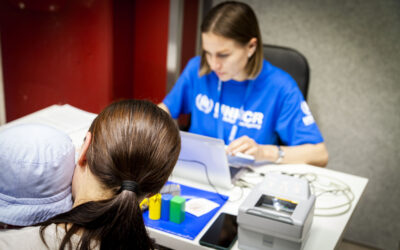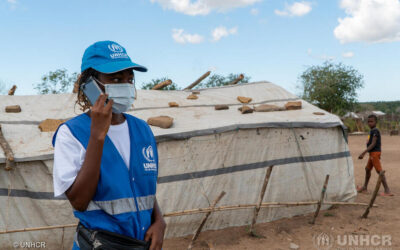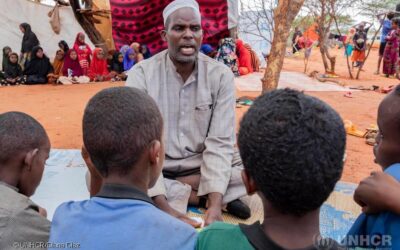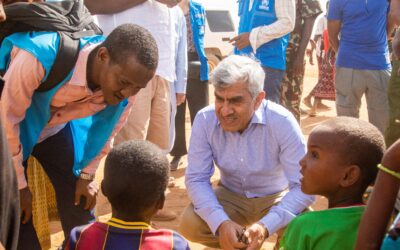Data Blog
Advancing the collection and use of data to inspire solutions for forced displacement
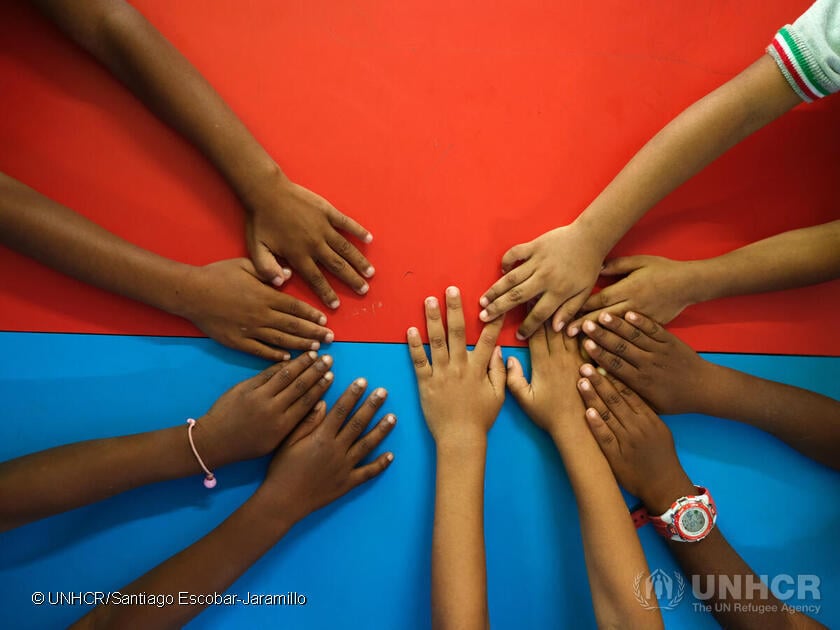
UNHCR and OECD Datathon: Harnessing Data for Forcibly Displaced and Stateless Children
By Tarek Abou Chabake and Jean-Christophe Dumont Hands of children at Tierra Bomba School, an ethno-educational institution with 1,188 students. ©UNHCR/Santiago Escobar-Jaramillo Data plays a crucial role in humanitarian efforts, providing timely and accurate insights...
Keeping UNHCR’s Biometrics System up to date
When UNHCR, the UN Refugee Agency, began collecting biometrics in 2002, it was for one local and very specific use case: To facilitate fair and single-time cash grants, irises of Afghan refugees in Pakistan were collected.
Alongside many developments in biometrics over the past two decades, UNHCR explored and implemented different biometric tools in different regions and for different purposes. Since the beginning, biometrics brought direct benefits to refugees, UNHCR, and partners alike, and are now considered an integral component of registration data in over 90 UNHCR country operations globally.
The DAFI programme gives young refugees access to education and hope. But how can we improve it?
For the last three decades, the Albert Einstein German Academic Refugee Initiative, known as DAFI, has offered refugees the chance to pursue higher education, giving them, their families, and their host communities hope for a better future. The DAFI is in...
When data informs decisions for improving the lives of refugees and host communities
World refugee day celebrations 2022 in Kakuma Camp. © UNHCR/Charity Nzomo By Tarek Abou Chabake, Aina Helen Saetre and Grace Sanico Steffan Refugees and host communities in Kakuma, Kalobeyei and urban areas of Kenya live in better conditions with the help of...
Coherent, coordinated and quality emergency training for UNHCR staff
The typical emergency response relies heavily on UNHCR’s ability to quickly scale up on staffing, budgets, and activities that deliver assistance and protection. UNHCR works with a roster of registration colleagues, who can be deployed within 72 hours when a new emergency arises and has developed a revamped Emergency Registration Learning Programme for colleagues.
A renewed approach towards personal data protection in the UN Refugee Agency
UNHCR enters 2023 with the General Policy on Personal Data and Privacy (GDPP) issued by the High Commissioner. The new policy establishes an updated and unified data protection and privacy framework applicable to the collection, use and sharing of personal data of all individuals by UNHCR, fostering trust among people we serve, staff, partners, and donors.
Bridging the digital divide – How UNHCR uses telephone for data collection of forcibly displaced persons
Sampling hard-to-reach populations has been a challenge for surveys for a long time. In the context of forced displacement, out-of-camp refugees, and internally displaced persons (IDPs) are particularly difficult to include in a sampling frame due to higher mobility compared to populations who reside in camps. UNHCR used Computer-Assisted Telephone Interview (CATI)-Assisted Telephone Interviews to collect household-level data of refugees and asylum-seekers.
Counting what matters: examining refugee inclusion in national education data systems
With the average length of displacement ranging from 10 to over 20 years, there is an urgent need to protect and serve refugee children by including them in national education systems.
UNHCR’s Biometric Tools in 2023
UNHCR, the UN Refugee Agency, uses a Biometric Identity Management System – or BIMS for short – for biometric enrolments of people forced to flee. It is our primary biometric system within our registration and identity management ecosystem and used in 93 countries across the world.
Tackling Kenya’s longstanding refugee situation: the need for comprehensive solutions
Sajjad Malik, UNHCR’s Director for Resilience and Solutions, returns to the Kakuma and Dadaab refugee camps 30 years after he helped set up services there. Ahead of the Global Refugee Forum 2023, he reflects on the importance of the Marshall Plan and the role of development organizations to building pathways for refugees to reach their aspirations.
Responsible and Timely: Sharing Data on UNHCR’s Microdata Library in 2022
Data in humanitarian action can provide accurate and up-to-date information on the location, size, demographics and needs of populations affected by crises. This information is used to develop and implement targeted interventions, such as the provision of water, sanitation, shelter, and other critical emergency assistance to those who need it most.
About the blog
The UNHCR Data Blog brings attention to data and research on protecting the rights and wellbeing of people forced to flee. It is also a forum to discuss research innovations in data-scarce forced displacement settings.
Useful links
UNHCR Data Transformation Strategy 2020 – 2025
UNHCR Socioeconomic Data and Analysis
Guidance on Registration and Identity Management
Registration and Identity Management at UNHCR
Socioeconomic Assessment Toolkit
Orientation for the early stages of planning a socioeconomic survey
Guidance on sampling household level surveys from UNHCR proGres registration data




